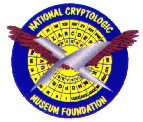
|
|
Tulane Engineering Forum |
||||||||||||||||||||||||||||||
|
Boumediene Belkhouche
Boumediene Belkhouche is a Professor of Computer Science in the
Department of Electrical Engineering and Computer Science at Tulane
University. His research areas include Programming Languages and Software Engineering.
In Software Engineering, he has been investigating issues associated with requirement expression
and analysis, abstract data types specifications, multiple view analysis, and object-oriented
design and analysis. In Programming Languages, he has been investigating the formal semantics
of concurrent processes and new computational models for Internet Programming Languages.
He is also involved in the Mississippi River Project. He is a member of the Association for
Computing Machinery and the IEEE.
Presentation Topic:
Languages for Developing Web-based Applications
By Boumediene Belkhouche
Summary
The World Wide Web (WWW) is continuously redefining the
computing landscape. The new emerging computational
model is still fluid. This fluidity is driven by the dynamic
mushrooming of web-based needs. These needs span the entire
daily life spectrum and do not seem to approach a stable stage.
So, instead of the canonical Input-Process-Output
computing framework well supported by established
programming languages, new languages to support
web-based applications are needed. The definition
of such languages (e.g., Java) have basically tried to extend
existing ones. This approach, however, is proving to
be more of a constraint to developers and users, because
it does not establish a comprehensive computational model
of the World Wide Web. Then the intent of this talk is:
|
|||||||||||||||||||||||||||||||






